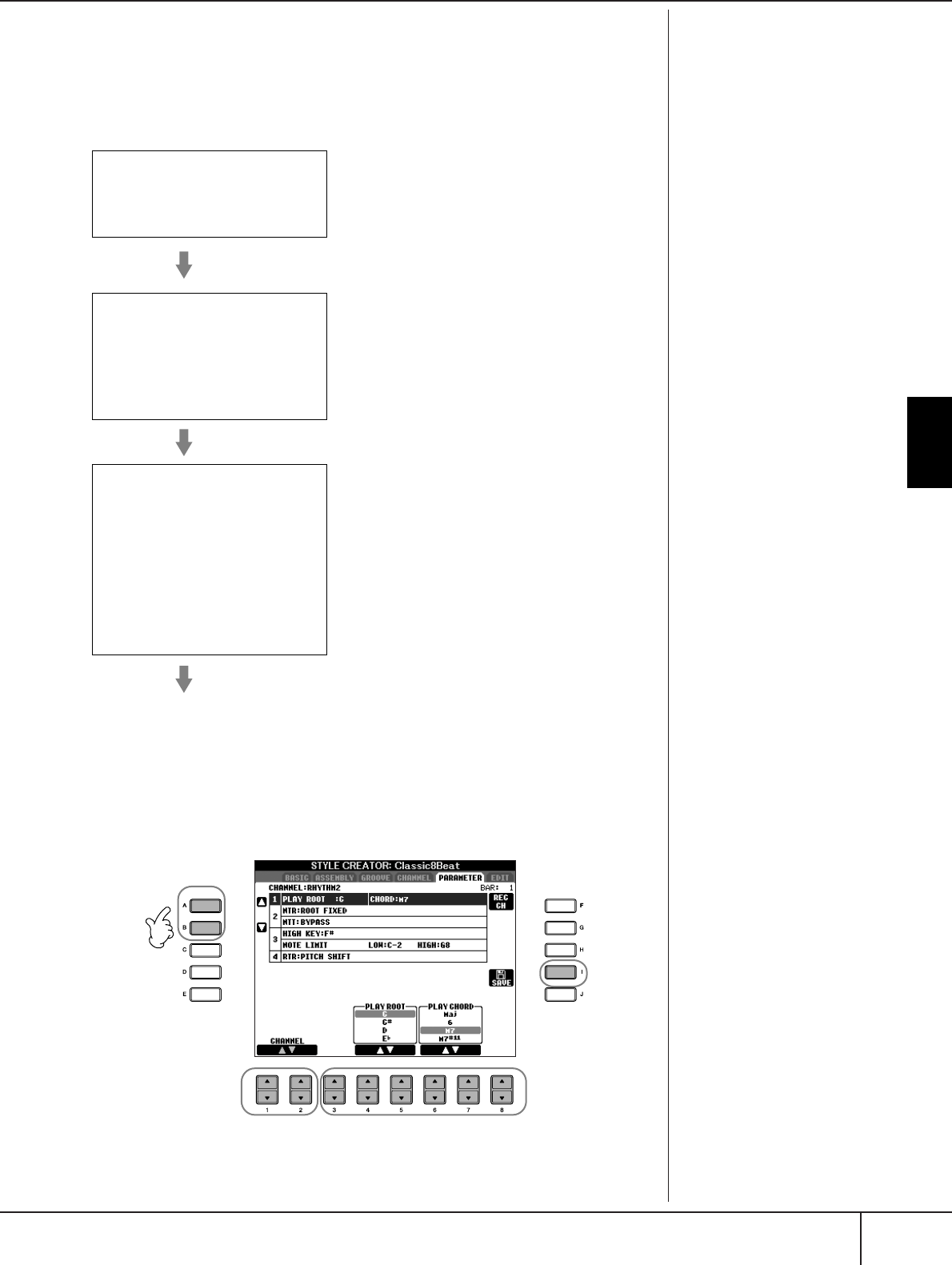
Style Creator
CVP-405/403/401 Owner’s Manual
123
Using, Creating and Editing the Auto Accompaniment Styles
Making Style File Format Settings (PARAMETER)
Special Parameter Settings Based on Style File
Format
The explanation here applies when you select the PARAMETER tab in step 4 of
“Basic Operation for Editing Styles” (page 119).
1 Press the [A]/[B] button to select the edit menu (page 124).
Editing of Style File Format data
is related only to note conver-
sion. Editing the rhythm chan-
nels has no effect.
The Style File Format (SFF) combines all of Yamaha’s auto
accompaniment (Style playback) know-how into a single
unified format. By using the Style Creator, you can take
advantage of the power of the SFF format and freely create
your own Styles.
The chart shown at left indicates the process by which the
Style is played back. (This does not apply to the rhythm
track.) These parameters can be set via the Style Creator
feature.
• Source Pattern
There are a variety of possibilities for Style playback
notes, depending on the particular root note and chord
type that are selected. The Style data is appropriately con-
verted depending on the chord changes you make during
your performance. This basic Style data that you create
with the Style Creator is referred to as the “Source Pat-
tern.”
• Note Transposition
This parameter group features two parameters that deter-
mine how the notes of the Source Pattern are to be con-
verted in response to chord changes.
• Other Settings
Using the parameters of this group, you can fine-tune how
Style playback responds to the chords you play. For exam-
ple, the Note Limit parameter allows you to have the
Voices of the Style sound as realistic as possible by shift-
ing the pitch to an authentic range—ensuring that no
notes sound outside the natural range of the actual instru-
ment (e.g., very low notes of a piccolo sound).
Source Pattern
SOURCE ROOT
(Chord Root setting of a Source Pattern)
SOURCE CHORD
(Chord Type setting of a Source Pattern)
Note Transposition
NTR
(Note Transposition Rule applied to the
Chord Root change)
NTT
(Note Transposition Table applied to the
Chord Type change)
Chord change via the
chord section of the
keyboard.
Other Settings
HIGH KEY
(Upper limit of the octaves of the note
transposing caused by the Chord Root
change)
NOTE LIMIT (Note range in which the
note is sounded)
RTR
(Retrigger Rules that determine how
notes held through chord changes will be
handled)
Output
1
2
3
4


















